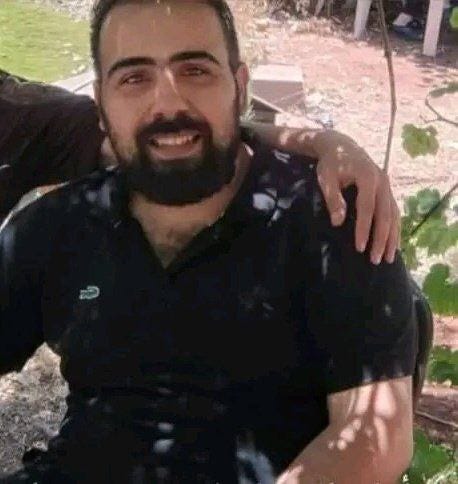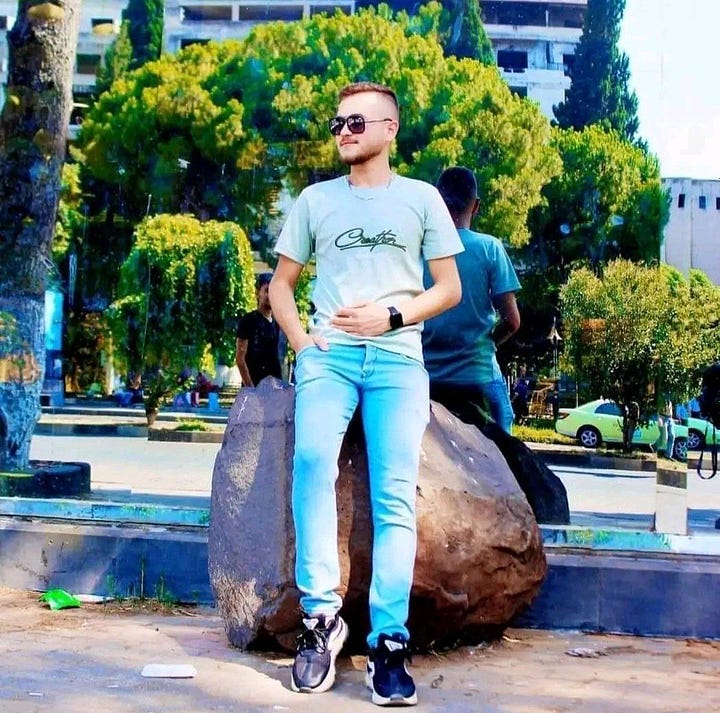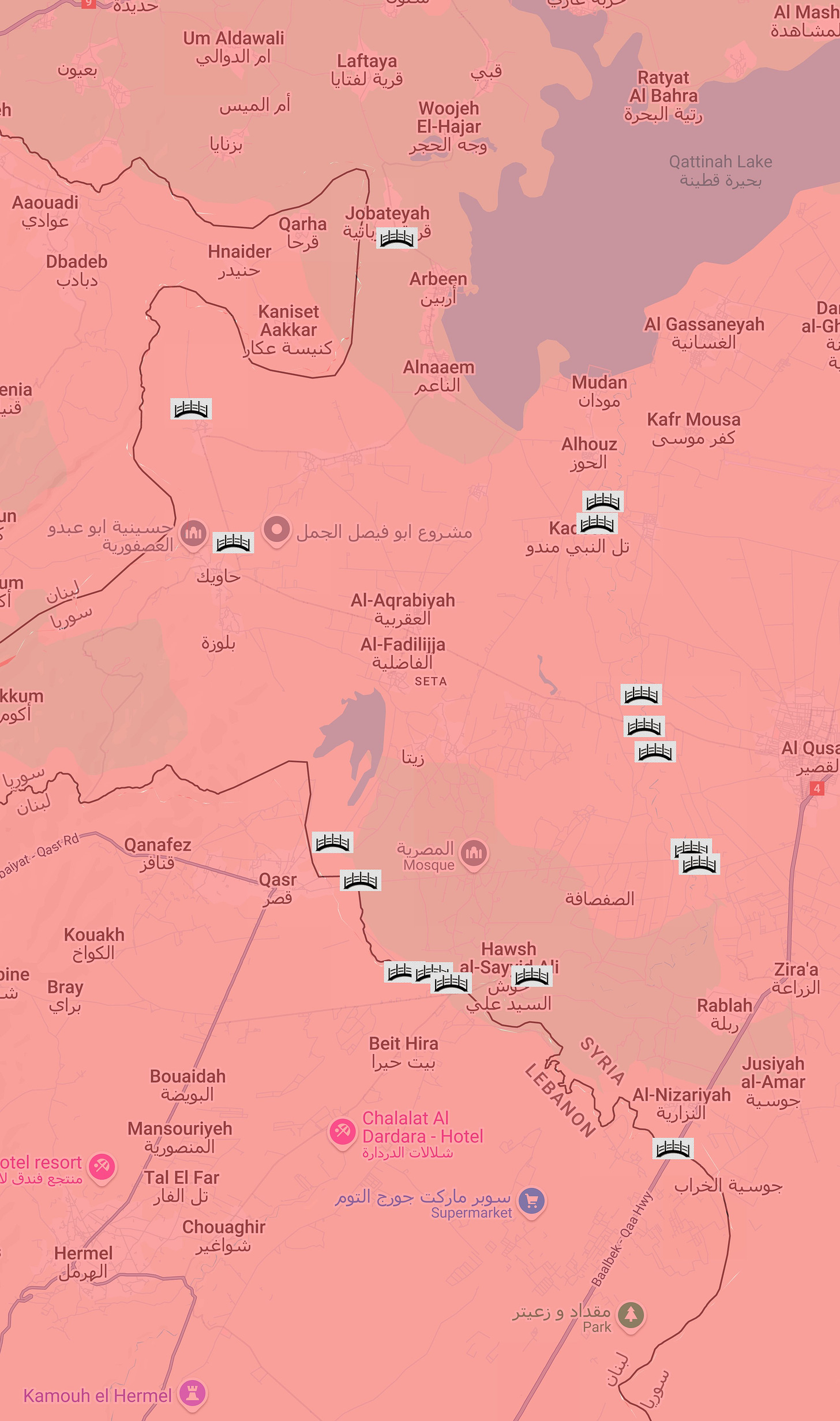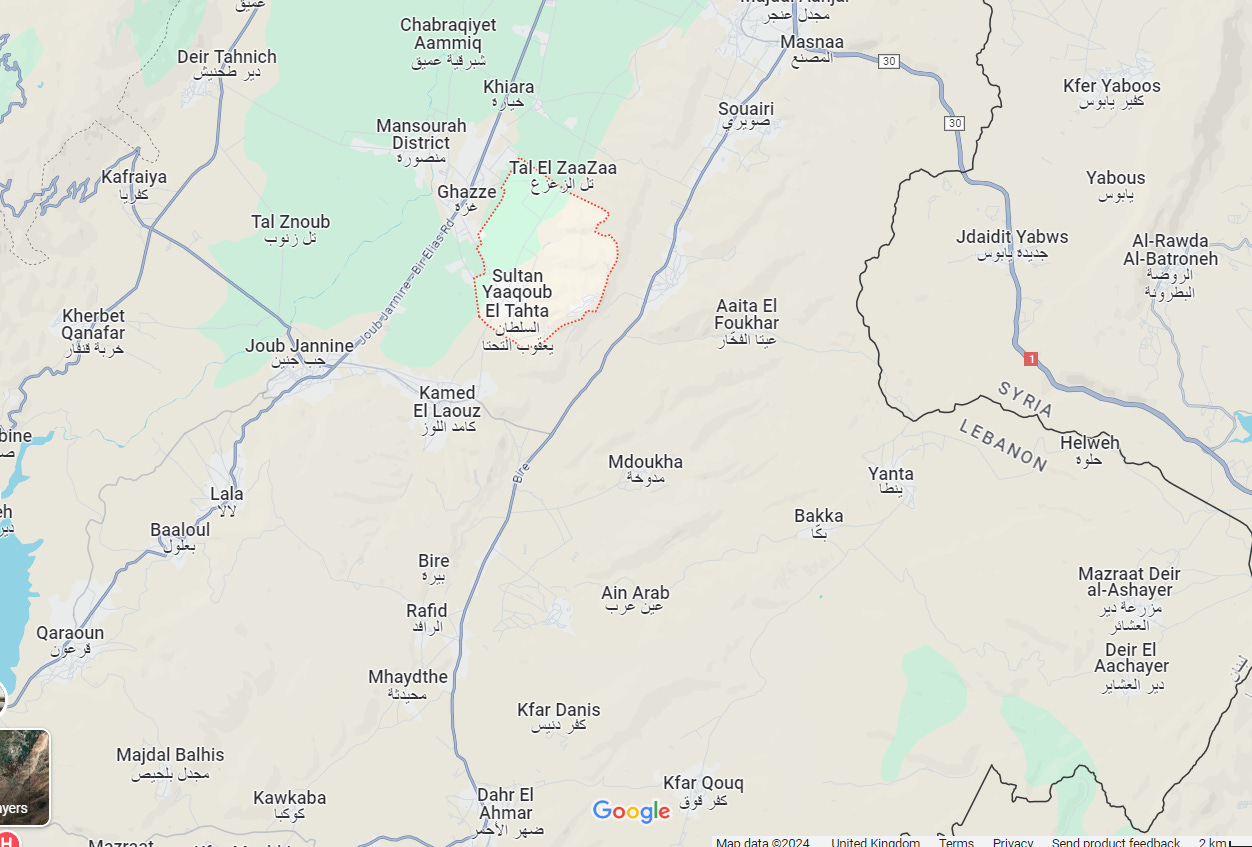Israel repeating history in Syria and Lebanon
Israel is attempting to close borders between Lebanon and Syria to prevent weapons supply, civilian movement and support for Hezbollah from Syrian Arab Army
The battle of Sultan Yaacoub during the Lebanon war 1982
In Syria a series of Israeli attacks have taken place in the last few months, increasing since the Zionist forces began their failed invasion of southern Lebanon. The attacks against Syria have been perpetrated by Israel and the terrorist groups that benefit from Israeli air-support, weapons, formerly medical treatment and PR.
Yesterday a bus carrying soldiers from the Syrian Arab Army was targeted by an IED planted on the road near Al Haisa village on the road between Homs and Mesyaf on the north-western countryside of Homs. Security forces closed the road and a wide sweep was made to find the culprits. Injuries were reported among the soldiers travelling on the night-bus.
This road had been regularly mined by the Western allied proxy terrorists throughout the war against Syria. I remember staying at a friend’s house in Mesyaf in 2017 and being told about the nightly clandestine mining activity which would target farm vehicles and military trucks the following morning. Until now, no group has taken responsibility for the 25th November 2024 attack.
On November 19th the mayor of Kafr Nan town in the northern countryside of Homs was assassinated after an IED exploded in a bus which was used to transport kindegarten students. The IED detonated in front of the Mayor’s house, killing him, moments before the children were about to board the bus. His body was taken to Al Basel Hospital in Homs city.
During the regime change war IED attacks by the terrorist groups, trained and backed by NATO member states, were a regular occurrence. In 2018 a bus in Homs was targeted killing at least nine civilians including students. Before Homs was liberated from terrorists, the Al Zahraa neighbourhood had been one of the most vulnerable areas in the city, being frequently rocked by terrorist attacks and shelling.
Israel has been repeatedly targeting the roads and bridges that connect Syria to Lebanon in the Homs countryside close to the border with Lebanon. On November 25th Israel struck the Al Qusayr countryside close to the border, killing two Hezbollah fighters and injuring five more. (SOHR pro-terrorist media outlet)
The airstrikes destroyed bridges on the Al Aasy river and the Juseh crossing on the borders with Lebanon. Some of these bridges had been previously destroyed by Israel, repaired and now destroyed again.
SOHR documented 154 attacks in 2024: 128 airstrikes and 26 rocket attacks by ground forces, during which Israel targeted several positions in Syria, destroying nearly 280 targets, including buildings, weapons and ammunitions warehouses, headquarters, centres and vehicles. These strikes killed 410 combatants and injured 273 others.
The combatants came from the Syrian forces, Iraq, Iran and Hezbollah.
Damascus and Damascus countryside has been attacked a reported 54 times. Daraa in the southern countryside 17 attacks. Homs 52 attacks. Al Quneitra on the border with the Zionist-occupied Golan territory 16 attacks. Tartous on the coast and home to the Russian Hmeimim naval and military base 3 attacks. Deir Ezzor in the north-east occupied by the US and their Kurdish Contra proxies - 5 attacks. Aleppo city and countryside 3 attacks which invariably coincide with offensive campaigns by the Al Qaeda-dominated armed groups in Idlib. Lattakia on the coast - 2 attacks. Sweida in the southern countryside, scene of recent Israeli-backed separatist demonstrations (by a minority of the Druze community) 3 attacks. Southern Idlib 1 attack against areas under the control of the Syrian forces.
The majority of these attacks are described by Israel as targeting the members of the Iranian forces, Hezbollah, Palestinian resistance groups or Iraqi Islamic Resistance. The strikes are also designed to clear pathways through the Syrian Air Defence, destroying radar systems and SAD trained experts.
On November 20th Israel carried out a murderous attack on an auxiliary forces headquarters in Palmyra to the east of Homs - twice-occupied and destroyed by ISIS during the regime change war that began in 2011. Initial reports indicated that there were at least 40 martyrs in the attack, the majority being Syrian Arab Army servicemen. However some reports indicate a death toll of 108 which included some of the Iraqi resistance Al-Nujaba’ Iraqi Movement and Hezbollah-affiliated fighters. Civilians were also murdered in the attack.
The airstrikes also targeted two other positions in Al-Jam’iyah neighbourhood, including a weapons warehouse near the industrial area.
Syrian researcher, former soldier and journalist Ibrahim Wahdi told me:
Local sources said that the Zionist aggression on the SAA and auxiliary forces in Palmyra city came during their rest after returning from military missions in the central Syrian desert.
According to field sources these units had been engaged in fierce clashes with ISIS terrorist groups in the Al Shoula area of the Deir Ezzor desert after they had been spotted infiltrating from within the US-imposed 55km exclusion zone around the US unlawful military base of Al Tanf on the border with Jordan, taking advantage of heavy fog to try and advance towards Syrian allied positions.
The Syrian allied forces routed the ISIS terrorists and caused significant injures and deaths among their ranks. Israel attacked Palmyra from the Al Tanf “protected” airspace therefore we can conclude that Israel was supporting the ISIS terrorist operations with airstrikes against the forces that have been entirely responsible for the defeat of ISIS in Syria with the help of the Russian Airforce since September 2015.
Just one of the many courageous young men murdered by Israel was Lieutenant Sharaf Hafez Mahfouz who had served 6 years in the Syrian Army on various fronts against the Western terrorist alliance. His final posting was to the Syrian desert to combat the ISIS fanatics. He only had 3 months remaining before the end of his service. Israel killed him in the Palmyra attack. He was bured in the village of Minyat Yahmour in Tartous.
Below, just a few of the other young men who will never return to their wives, families, children after Israel killed them because they were preventing the terrorist groups backed by Israel and the US, UK alliance from retaking territory they had previously lost during the 14 year war against Syria.







The intensity of Israeli attacks in the Homs region which borders Lebanon has a twofold objective. First, Homs is the military capital in Syria being so centrally located.
On October 5th 2023, 2 days before the Palestinian Operation Al Aqsa Flood - a terrorist drone attack from the north of Syria targeted a graduation ceremony at the Homs Military Academy killing 112 including 31 women and 5 children, injuring over 277 other. The local hospitals were overwhelmed with incoming victims. The attack took place only moments after departure of Syrian Defence Minister, Ali Mahmoud Abbas, from the ceremony.
Israel is not only targeting the allies of Syria. Israel is trying to decimate the Syrian Air Defence capability, demoralise and deplete Syrian armed forces and to destroy the essential infrastructure that provides a road link to Lebanon and the Hezbollah resistance forces. At the same time the US and Israel are bombing the Al Bukamal border crossing with Iraq to try to close the land bridge between Iran, Iraq, Syria and Lebanon. Thus they are intending to isolate both Lebanon and Syria from their allies and to break the links in the Resistance chain of supply which includes humanitarian aid, energy resources to combat the US occupation of Syrian resources, and military equipment to support the Resistance.
The epic battle of Sultan Yacoub 1982 and how Israel is trying to reverse the crushing defeat by Syria
The area around Homs and Al Qusayr targeted by Israel.
The bridges destroyed in the area west of Al Qusayr and on the border with Lebanon
The recent Israeli aggression on the area of Al Qusayr shown on the map above, circled in blue, has affected all the bridges that connect the villages west of the river with the villages on the eastern banks. The main roads between Al Qusayr and the countryside have been blocked. This disrupts the movement of farmers, students, workers and hinders the transport of all goods in the areas that extend over a distance of around 40km from Al Qusayr towards the Shin hub which is further to the north close to the border with Lebanon.
Recently Israel has been taking responsibility for its aggression on Syria. The previous MO was to remain silent about the attacks they had launched with some very rare exceptions. This, and the recent belligerent Zionist rhetoric towards Syria and President Assad, signals that Israel is now brazenly expanding the war deep into Syrian territory.
Zionist spokespeople have threatened the life of President Bashar Al Assad if he does not end relations with Hezbollah, Iran and the allied Resistance factions opposed to genocide in Palestine and Zionist expansionist policy in the region.
Threats have been issued (I have reported on extensively on my Substack) that Israel will target any attempts to supply Hezbollah with military equipment via Syrian territory. Israel will also target any facilities they believe to be producing weapons or missiles for use in Resistance operations. Prior to these statements there had been a visit by the deputy chief of staff of the Israeli armed forces to the occupied Golan territories on the “ceasefire” line with Syria.
Of course, these statements by the Zionist regime, signal the possibility of attacks on ALL Syrian infrastructure on the pretext of targeting weapons manufacturing facilities or supply infrastructure - history has demonstrated that this will mean a devastating impact on roads, scientific research centers, defense laboratories, military bases, ammunition depots, and military airports bridges, service buildings, ports and civilian airports (already targeted multiple times in the last 12 years). Those most affected will be Syrian civilians already struggling after 14 years of a Western proxy military intervention, savage sanctions increased by President elect Trump during his first term.
The ongoing attacks in Qusayr also indicate another more sinister agenda of the Zionist military.
There is a concerted attempt to isolate Lebanon from Syria by land by destroying the main arterial roads and transport hubs that connect the two countries. Border crossings, international roads have been severely damaged preventing the arrival of humanitarian relief and support for the Lebanese people - even impeding the flight of displaced Lebanese from the southern region of Lebanon under constant bombardment from the Israeli warplanes, artillery, tanks and drones.
Since the regime change war began in 2011 the focus by the Western-Israeli alliance has been to destroy Syria’s air defence. The air defence bases were seized, occupied and taken out of service by the proxy terrorist factions from the beginning of the war. Since 2018 Israel has increased attacks on all aspects of Syrian air defence systems and personnel.
In Homs city and countryside Israel has targeted the scientific research and development centre in Mesyaf multiple times, unsuccessfully despite assassinating scientists and staff at the centre in the process. The plan is clear - to deplete Syrian military capability and to keep the Syrian Arab Army busy on multiple fronts - in the north-west (Idlib), in the north (Turkey and former Free Syrian Army proxies), in the north-east (US and Kurdish Contras), in the east (US base at Al-Tanf incubator for terror gangs including ISIS) and in the south (possible land invasion by Israel and Druze separatists backed by Israel, remnants of illegal armed groups in Daraa and surrounding countryside).
Israel is well aware that Syria not only provides a land-bridge for the Resistance Axis but is also more than capable of producing the weapons and missiles currently being used by the Lebanese and Palestinian resistance.
Syria manufactures weapons from bullets to missiles and artillery, trains and supplies the Resistance with them and is a huge strategic reservoir for all forms of military, logistical, human and manufacturing materials support. It is a base on which the resistance in Lebanon relies and a strategic depth that embraces all resistance movements in the region. (Al Haqq on Telegram)
The US goal in collaboration with Israel is to close down the land-bridge between Iran, Iraq, Syria and Lebanon and to keep the Syrians on a knife-edge economically by maintaining collective coercive measures in place (sanctions) while occupying Syrian resources both energy and agricultural which reduces the state’s capability to act independently without support from its allies that include Iran and Russia.
The bellicose statements being issued by the Zionist leadership, the uptick in aggression against Syria, the attacks on Syrian military and infrastructure is a clear prelude to war and perhaps also to Israeli intentions in Lebanon.
The Syrian defeat of Israel in the battle of Sultan Yacoub 1982
In 1982 during the Lebanon war, the Syrian military delivered a humiliating defeat to the Israeli forces in the town of Sultan Yacoub close to the border with Syria:
The following is taken from military Wiki:
At the beginning of the invasion Israeli Brig. Gen. Giora Lev’s 90th Division passed through Marjayoun and took up positions around Kawkaba and Hasbaiya. From there it began to push the Syrian 76th and 91st Armored Brigade, of the 10th Division, north up the Bekaa Valley towards Joub Jannine. The Syrians made skillful use of their Gazelle helicopters to support the delaying action, firing HOT missiles into the long columns of Israeli vehicles stretched out along the roads. Israel countered with its own Cobra helicopters, used against both ground targets and the Gazelles.
On June 10 the Israeli 90th Division was rushed forward in order to gain as much ground as possible before the cease-fire came into effect. Late that night most of its 362nd Battalion as well as Pluga Kaph from the 363rd Battalion fought its way through Syrian infantry in the village of Sultan Yacoub only to become cut off and surrounded. At dawn, the Israelis broke out and escaped to the south with the support of 11 battalions of artillery firing both at the Syrians and in a box barrage around their own troops. In the six-hours ordeal the Israeli Army lost eight tanks and about 30 killed.[3] The Israelis failed to destroy the disabled M-48A3 Magach-3 tanks they left behind and they were recovered the next day by the Syrians.[1] At least one is now on display at the Tishreen Panorama Military Museum in Damascus.[2]
Thirty IDF soldiers died in the battle, which was viewed as an Israeli intelligence failure.[2][3] Three IDF soldiers remain unaccounted for. The three soldiers were captured and were paraded through Damascus held on top of their captured tank. Time magazine reporter Dean Brelistestified to having seen the three captives alive at the time.
If you would like to watch a fascinating documentary (11 hours) covering the Syrian role in Lebanon during the war years - the link is here. It does provide really important details on the Sultan Yaacoub debacle for the Zionists.
Israel’s determination to cut off all arterial roads and border crossings linking Syria to Lebanon suggests that they have plans to repeat their attempt to take control of the entire border between Syria and Lebanon thus encircling Hezbollah and fully isolating Lebanon from the Resistance supply routes.
Russia has rejected Israel’s request to monitor and prevent the supply of military shipments through Syrian territory.
Russia's presidential envoy to Syria, Alexander Lavrentiev, told Russian media on Wednesday that such a request would require the setting up of new checkpoints along the border - something that falls outside the mandate of Russian forces in Syria.
Lavrentiev claimed that the presence of Russian forces in Syria was strictly related to "counterterrorism" operations.
"These responsibilities should fall directly on the Lebanese authorities and the Syrian government," Lavrentiev said, adding that Russia was incapable of "influencing this matter".
He said that fulfilling such a commitment would be "extremely challenging [...] even from a practical standpoint, we cannot guarantee this".
This is diplomatic speak to send a very strong message to Israel that Russia will not enter into operations that will damage its relationship with Damascus.
Meanwhile Russia has increased its military surveillance posts on the border with the Israeli-occupied Golan territories to monitor any unusual activity from the Israeli side. Russia is fully committed to its counter-terrorism operations throughout Syria in collaboration with the Syrian Arab Army - terrorists that work in tandem with Israel and the US alliance to destabilise the Syrian state and to occupy or steal Syrian resources.
What Israel has perhaps not calculated are the multiple tunnels that connect Sryia to Lebanon and that will be just as impossible to destroy as the thousands of tunnels in Gaza, many of which have still not been located or impacted by the 85,000 tonnes of explosives that Israel has used “against Hamas” in Gaza, killing, maiming and obliterating civilians in their tens of thousands.
Time will tell if Israel is prepared to expand the aggression into Syria after failing to take and hold on to territory in the south of Lebanon and failing to finish Hamas in Gaza or to fully suppress a poorly armed Palestinian resistance in the Occupied Territoris despite grandiose ambitions to fully annex the West Bank after Trump’s election victory.
****








No comments:
Post a Comment